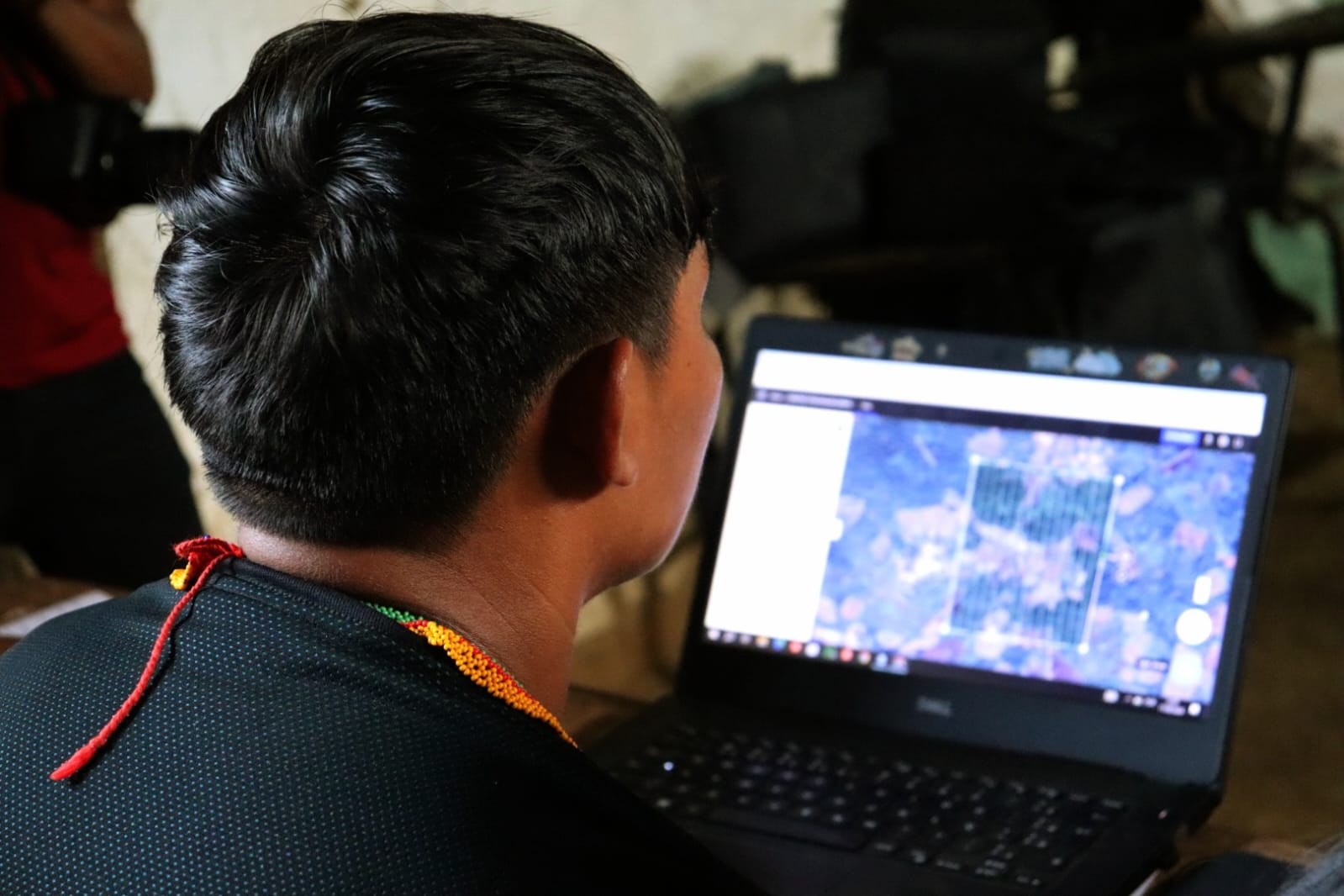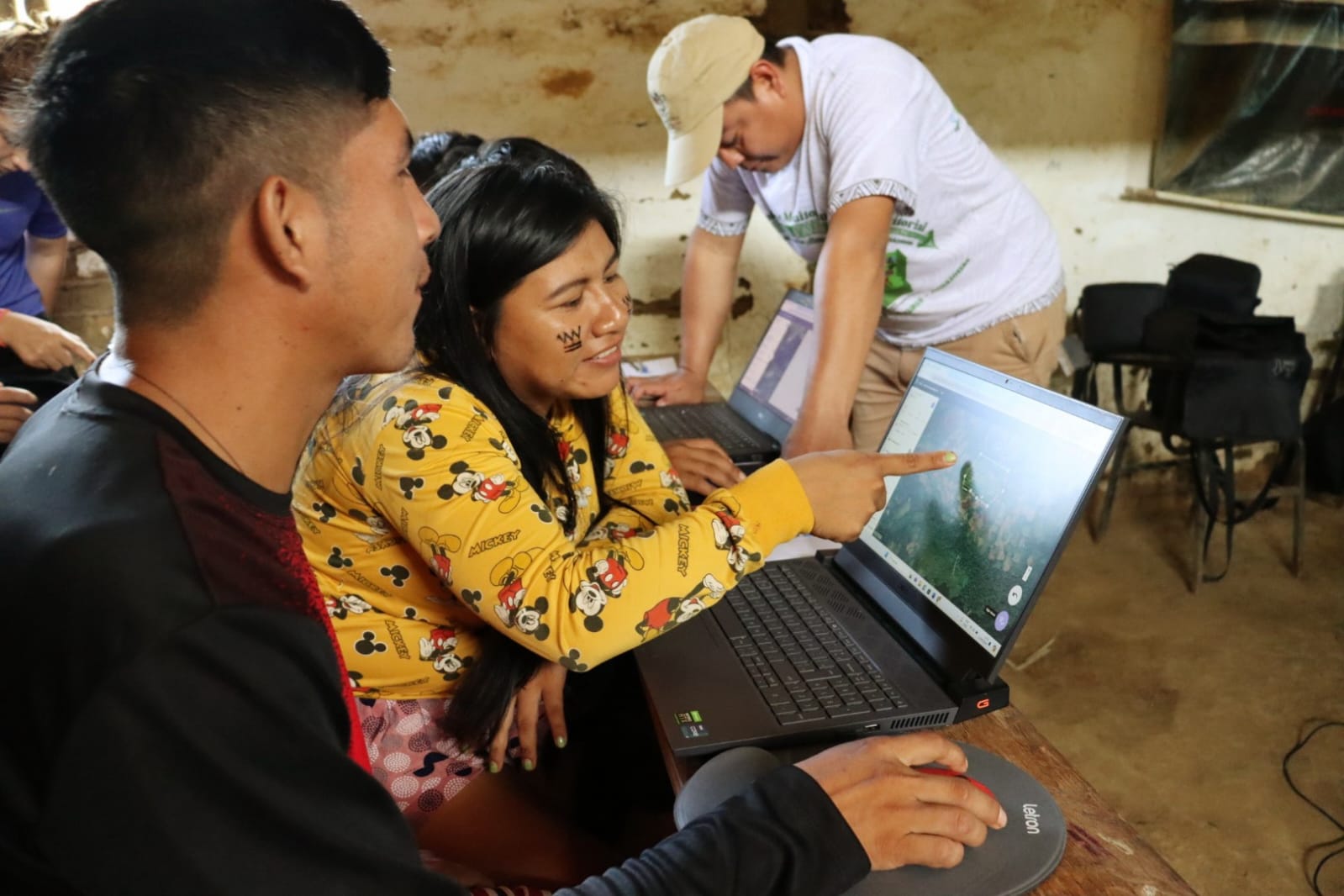In the heart of the Brazilian Amazon, the Yanomami Indigenous Land, the largest in Brazil, stretches across a vast territory nearly the size of Portugal. Here, Indigenous leaders are placing their trust in the skills of their youth to uphold the legacy of their ancestors and safeguard their future.
Located between the states of Roraima and Amazonas, this territory has faced severe humanitarian and environmental crises due to the invasion of approximately 20,000 illegal miners in search of gold and cassiterite. Now, trained Yanomami youths are becoming crucial in the fight to defend their land, acting as multipliers of drone monitoring to watch over their territory and combat new incursions.
When illegal miners began invading their land seven years ago, many Yanomami felt helpless. How could they possibly monitor an area almost the size of Portugal, located in a remote region of the northern Amazon, with no police presence, planes, or advanced technology? Approximately 20,000 illegal garimpeiros, as these miners are known in Brazil, invaded the land in their relentless search for gold and cassiterite. This caused a humanitarian and ecological disaster. The Yanomami reached out to the Brazilian federal government, only to be met with inaction during the far-right administration of President Jair Bolsonaro (2019-2022). Bolsonaro, who supported mining on Indigenous lands despite its constitutional ban, stalled all efforts to evict invaders from the Yanomami territory. Left to their own devices in the country’s largest Indigenous territory, bordering Venezuela, the Yanomami decided to take matters into their own hands.
In 2022, the Hutukara Yanomami Association (HAY) sought partnerships to establish a project to train individuals in drone operation. Maurício Ye’kwana, a director at HAY, initiated this project in 2021 after attending the COP26 climate summit in Glasgow. He secured support from European funders, who decided to back the training initiative through the international humanitarian organization CAFOD. The Yanomami and Ye’kwana, with a population of over 32,000, couldn’t possibly monitor approximately 10 million hectares (24.7 million acres) on foot or by canoe, but drones offered a new perspective and capability.
According to experts, these interactive technologies have greatly simplified the learning process for Yanomami youth.

“The course’s objective was to train young Yanomami, spark innovation in their thinking, and empower them to act as teaching multipliers for other young people,” Maurício explained to Mongabay.
Cidiclei Palimitheli, 26, was part of a group that completed the advanced training module as drone operators last September. He can now use this equipment for territorial monitoring and surveillance. “I really enjoyed this workshop because I learned more about how to drive the drone and map our territory,” Palimitheli told Mongabay. “In this third advanced stage, the new thing was letting the drone take off automatically.” Palimitheli and his colleagues believe this non-Indigenous created technology will provide a critical tool in preserving cultural traditions and strengthening environmental protection across one of Brazil’s most significant Indigenous territories. He’s already part of a territorial protection group operating in a village affected by the invaders. “Now the drone will give me more security to map the communities and see if the miners are nearby, threatening them,” he stated.
Since 2022, three in-person workshop modules have been held, offering both theoretical and practical training in Yanomami communities within the state of Roraima, the area most heavily impacted by illegal mining during the past seven years. “I’ve been taking this workshop for two years and I’ve already learned a lot,” Alexandre Ye’kwana, 24, told Mongabay. “For example, I want to map the mining area and I can already do that without the teacher. I already know how to make a flight plan and I learned more about automated functions.”

When left-wing President Luiz Inácio Lula da Silva took office in 2023, after defeating Bolsonaro, hope returned to Indigenous communities in Brazil. The new President pledged to evict invaders from Indigenous territories and protect the Amazon Rainforest and all Brazilian biomes. Raids and assistance finally arrived in 2023. However, the Yanomami soon realized they couldn’t depend entirely on government actions. The illegal miners resisted leaving, with many returning after the initial raids. Two years later they are seeing some eviction success, but the challenge remains a long-term one.
The federal government carried out 3,536 raids to remove invaders, resulting in the loss of 267 million reais ($46.6 million) to organized crime networks involved in illegal mining within the territory and a 91% drop in gold mining activity. To build the drone program, the Hutukara association collaborated with the Indigenous Council of Roraima (CIR) to conduct training. Three in-person workshops were held on beginner, intermediate, and advanced modules from 2022 to 2024.
Giofan Erasmo, an agronomist from the Office for Territorial, Environmental and Climate Change Management at the CIR, expressed enthusiasm for the results. He represented the partner organization, viewing the mission as “very successful.” “After studying the advanced module, they taught others how to use drones to take photos of the Indigenous territory,” Erasmo told Mongabay.

Erasmo directly trained six Yanomami and Ye’kwana individuals who, in turn, shared their knowledge by training eight other young Yanomami communicators. “In addition to enhancing protection, this work helps them better understand their extensive territory and help plan and manage the territories where their communities are located,” Erasmo said. He added that the use of interactive technologies made learning significantly easier. Gradually, the students began contributing ideas and suggestions for the practical application of the technology in their communities, with mapping rivers being a specific request. The workshops included hands-on training in drone operation and producing georeferenced photos and videos. Rivers are especially at risk, as mercury contamination from gold mining is the leading pollutant in the Amazon, with 20% of the staple fish contaminated.

Erasmo said the outcomes have been remarkably positive. “Three years ago, they had no idea about drones or how to use them, and now, they have already reached an advanced level of operation. From now on, they’ll be able to do concrete work for the benefit of their communities,” he shared. Erasmo foresees future training focused on Geographic Information Systems to further expand their mapmaking capabilities.
Erasmo also underscored the importance of the Indigenous instructors. “The perspective of Indigenous people is different from that of non-Indigenous people, and being ‘relatives’ [a term used to acknowledge people of Indigenous origin, despite their specific ethnicity], we communicate and understand each other,” said Erasmo, himself a member of the Macuxi ethnic group. He explained that while there are cultural differences, Yanomami and Macuxi share similar worldviews. “This partnership is super important, and a lot of their collaborations are extremely useful. ‘Relatives’ get along well, so they can learn things easily from each other,” Maurídio explained. He stressed the need for continuous drone training because “the government may not always sustain the current efforts.” He added, “The Yanomami themselves must take the lead.”


